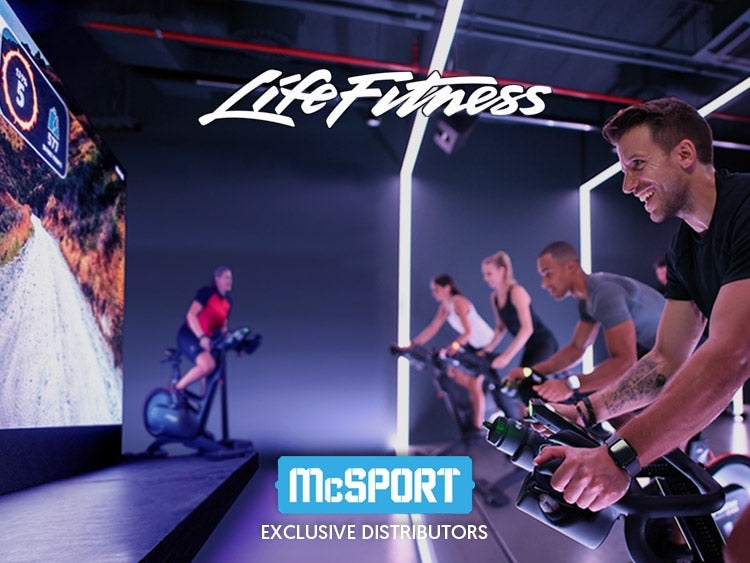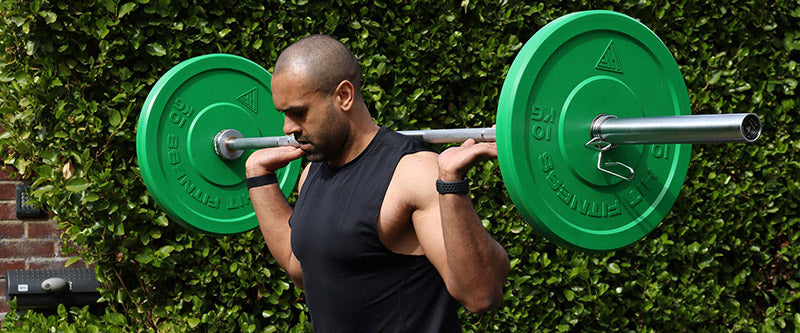Weight Plates are used with Barbells or some types of Adjustable Dumbbells to increase resistance during weighted exercises.
Olympic weightlifting plates come in various types, and each has its own advantages and disadvantages. Let's explore the differences between bumper plates, cast iron discs, and tri-grip rubber radial plates:
1. Bumper Plates
Bumper plates are typically made of solid rubber, with an iron or steel insert in the center for durability and stability.
They are designed to be dropped from overhead lifts, such as snatch and clean & jerk, without causing damage to the barbell, floor, or plates themselves.
Bumper plates are color-coded based on their weight, making it easy to identify the desired load quickly.
They have a larger diameter compared to other types of plates, which helps maintain the correct height of the barbell during lifts.
Advantages:
- Safe for dropping from overhead lifts, reducing the risk of damage and injury.
- Come in Black or Color-coded for easy weight identification.
- Large diameter maintains proper barbell height.
Disadvantages:
- Thicker design limits the number of plates that can fit on the barbell, reducing the maximum load.
2. Cast Iron Discs
Cast iron discs are made entirely of solid cast iron, without any rubber coating.
They come in various sizes and weights and are the most common and cost-effective type of weightlifting plates.
Olympic Cast iron weight plates durable and long-lasting, capable of withstanding heavy use over time.
They have a smaller diameter compared to bumper plates, allowing more plates to be loaded on the barbell for heavier lifts.
Advantages:
- Cost-effective and widely available.
- Smaller diameter allows for higher maximum load on the barbell.
- Durable and long-lasting.
- They feature three handles (tri-grip design) that make it easier to pick up and load the plates onto the barbell.
Disadvantages:
- Not designed for dropping from overhead lifts; can cause damage to the barbell and floor.
- Lack of rubber coating may result in more noise and potential damage when the plates are dropped or moved forcefully.
3. Tri-Grip Rubber Radial Plates
Tri-Grip Rubber Radial Plates have a rubber coating that provides protection for the plates, the barbell, and the floor.
Like, Cast Iron Discs, they also feature three handles (tri-grip design) that make it easier to pick up and load the plates onto the barbell.
The rubber coating dampens noise and reduces the chances of damaging the floor or the plates themselves.
Tri grip rubber plates come in various weights and sizes and are often used in commercial gyms.
Advantages:
- Rubber coating provides protection for plates, barbell, and floor.
- Tri-grip design offers easier handling and loading.
- Reduced noise and impact when dropped.
Disadvantages:
- Not specifically designed for dropping from overhead lifts like bumper plates.
- Can be more expensive than cast iron plates.
It's important to consider your specific needs and training style when choosing the type of weightlifting plates. Bumper plates are ideal for Olympic weightlifting and CrossFit workouts, where dropping the weights is common.
Cast iron plates are a more affordable option for general weightlifting, powerlifting, or bodybuilding.
Tri-grip rubber radial plates are a good choice for commercial gyms or home setups that prioritize floor and equipment protection.
We offer a huge range of Weight Plates to suit the needs of every type of trainer whether they are beginner or advanced weight lifters. A standard barbell usually can carry 120kg and once you start lifting at this weight it's time to step up to the Olympic grade. Our olympic plates fit into our olympic barbells and can be used in conjuction with our Weight Benches and Power Racks to ensure you get a varied workout targeting all the important muscle groups! Our rubber bumper plates will ensure there will be no damage to flooring or the surrounding area when the weights are dropped.
Need more Info? Why not read our Buying Guide:
Why Bumper Plates Are Worth It











































